detail profile hans richter

Riwayat Hidup
Richter's first contacts with modern art were in 1912 through the "Blaue Reiter" and in 1913 through the "Erster Deutscher Herbstsalon" gallery "Der Strum", in Berlin.
In 1914 he was influenced by cubism.
He contributed to the periodical Die Aktion in Berlin.
His first exhibition was in Munich in 1916, and Die Aktion published as a special edition about him.
In the same year he was wounded and discharged from the army and went to Zürich and joined the Dada movement.
Richter believed that the artist's duty was to be actively political, opposing war and supporting the revolution.
His first abstract works were made in 1917.
In 1918, he befriended Viking Eggeling, and the two experimented together with film.
Richter was co-founder, in 1919, of the Association of Revolutionary Artists at Zürich.
In the same year he created his first Prélude (an orchestration of a theme developed in eleven drawings).
In 1920 he was a member of the November group in Berlin and contributed to the Dutch periodical De Stijl.
Throughout his career, he claimed that his 1921 film, Rhythmus 21, was the first abstract film ever created.
This claim is not true: he was preceded by the Italian Futurist Bruno Corra and Arnaldo Ginna between 1911 and 1912 (as they report in the Futurist Manifesto of Cinema), as well as by fellow German artist Walter Ruttmann who produced Lichtspiel Opus 1 in 1920.
Nevertheless, Richter's film Rhythmus 21 is considered an important early abstract film.
Richter moved from Switzerland to the United States in 1940 and became an American citizen.
He taught in the Institute of Film Techniques at the City College of New York.
While living in New York City, Richter directed two feature films, Dreams That Money Can Buy (1947) and 8 x 8: A Chess Sonata in 8 Movements (1957) in collaboration with Max Ernst, Jean Cocteau, Paul Bowles, Fernand Léger, Alexander Calder, Marcel Duchamp, and others, which was partially filmed on the lawn of his summer house in Southbury, Connecticut.
In 1957, he finished a film entitled Dadascope with original poems and prose spoken by their creators.
After 1958, Richter spent parts of the year in Ascona and Connecticut and returned to painting.
In 1963, he directed the short film "From the Circus to the Moon" on the American artist Alexander Calder.
Richter died in Minusio, Switzerland in 1976.
Info Pribadi
Peran Yang Di Mainkan Hans Richter
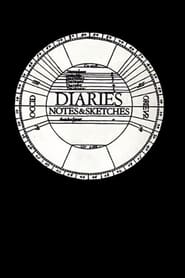 An epic portrait of the New...
An epic portrait of the New...Diaries, Notes, and Sketches 2013
An epic portrait of the New York avant-garde art scene of the 60s.
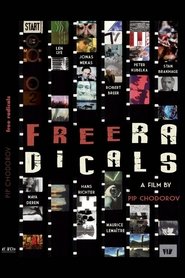 Experimental filmmaker Pip Chodorov traces the...
Experimental filmmaker Pip Chodorov traces the...Free Radicals: A History of Experimental Film 2011
Experimental filmmaker Pip Chodorov traces the course of experimental film in America, taking the very personal point of view of someone who grew up as part of the experimental film community.
 Thematic anthology of Le retour a...
Thematic anthology of Le retour a...Cinema of the avant-garde 1923 - 1930 2010
Thematic anthology of : Le retour a la Maison (1923) by Man Ray; Emak-Bakia (1926) by Man Ray; L'Etoile de Mer (1928) by Man Ray; Les Mysteres Du Chateau de Dé (1929) by Man Ray; Rhythmus 21 (1921) by Hans Richter; Vormittagsspuk (1928) by Hans Richter; Anemic Cinema (1926) by Marcel Duchamp; Ballet Mecanique (1924) by Fernand Léger; Le Tempestaire (1947) by Jean Epstein; Romance Sentimentale (1930) by Grigori Aleksandrov and Sergei M. Eisenstein; La Coquille et le Clergyman (1928) by Germaine Dulac; Regen (Rain) (1929) by Joris Ivens and Mannus Franken
 A film collage tracing the story...
A film collage tracing the story...He Stands in a Desert Counting the Seconds of His Life 1986
A film collage tracing the story of the lives, loves, and deaths within the artistic community surrounding Jonas Mekas.
 1967 film directed by Greta Deseson about...
1967 film directed by Greta Deseson about...Dada 1969
1967 film directed by Greta Deseson about the Dada art movement. Featuring Marcel Duchamp, Man Ray, Max Ernst, Hans Richter and Gabrièle Buffet-Picabia
 Hans Richters documentary on the game...
Hans Richters documentary on the game...Passionate Pastime 1958
Hans Richter's documentary on the game of chess. Narrated by Vincent Price. Outlines the history of chess from ancient times to the present and traces its origins in India, China, and Persia. Prints, painting, illuminated manuscripts, live photography and rare chess pieces are shown as well as chess figures designed after Picasso and Braque.
 8 x 8 A ChessSonata in 8 Movements is...
8 x 8 A ChessSonata in 8 Movements is...8 x 8: A Chess-Sonata in 8 Movements 1957
8 x 8: A Chess-Sonata in 8 Movements is an American experimental film directed by Hans Richter, Marcel Duchamp, and Jean Cocteau. Described by Richter as "part Freud, part Lewis Carroll" and filmed partially on the lawn of Duchamp's summer house in Southbury, Connecticut.
 Michle an employee at the airport...
Michle an employee at the airport...Intermediate Landing in Paris 1955
Michèle, an employee at the airport, is in love with American pilot Eddie Miller who regularly flies the route from New York to Paris, but problems arise when he is transferred to the Tokyo route. Meanwhile Michèle's uncle Albert who works in the freight department sets out to tackle a drug trafficking outfit.
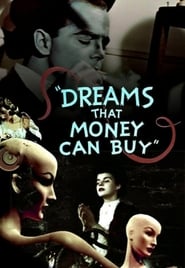 An attempt to bring the work...
An attempt to bring the work...Dreams That Money Can Buy 1947
An attempt to bring the work of surrealist artists to a wider public. The plot is that of an average Joe who can conjure up dreams that will improve his customer's lives. This frame story serves as a link between several avant-garde sequences created by leading visual artists of their day, most of whom were emigres to the US during WWII.
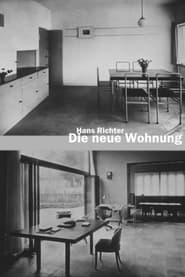 A commissioned film for Schweizerischer Werkbund...
A commissioned film for Schweizerischer Werkbund...The New Apartment 1930
A commissioned film for Schweizerischer Werkbund (SWB), Die neue Wohnung was produced for the Basel architectural and interior design exhibition, WOBA, to demonstrate innovative aspects of modern architecture and highlight their differences from the event’s highly conservative approach. Despite its ad campaign roots, Richter's touch is not absent; The surviving version, aimed at a "bourgeois" Swiss public, presents decluttered, functional architecture and decor as superior to the traditional and luxurious "ancient" ways of living.
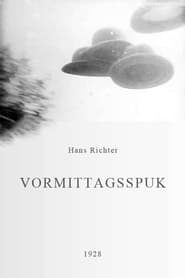 Hans Richter noted for his abstract...
Hans Richter noted for his abstract...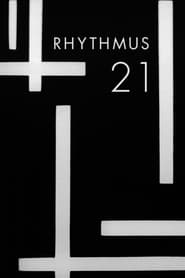 Abstract animated short film Grey and...
Abstract animated short film Grey and...